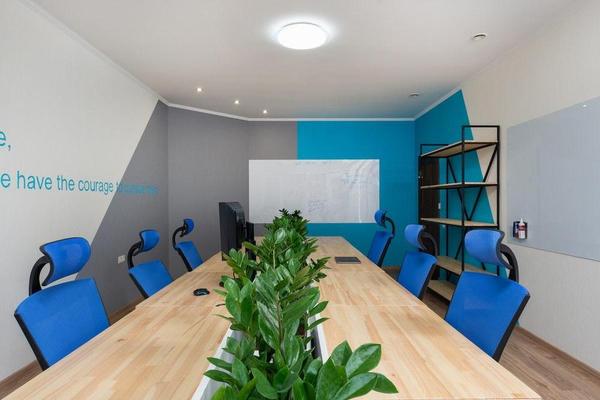In 2023, more people are becoming aware of how much damage is being done to the planet with unsustainable practices, which in part was raised by the famous show Blue Planet 2, hosted by Sir David Attenborough.
In response, more people than ever before are changing their diets, their lifestyles, and of course, where and how they work.
As global awareness of climate change and environmental sustainability continues to grow, many organisations are also striving to reduce their ecological footprint. One significant area where businesses can make a positive impact is by adopting greener practices within their workspaces. By incorporating sustainable initiatives, offices can contribute to a healthier environment, improve employee wellbeing, and even enhance their bottom line.
So, what are some of the best ways to do this? This article explores various strategies that offices can employ to create greener workspaces.
Food in the workplace
While there has been a lot of emphasis on changing dietary habits in the home, this can also be applied to the workplace. If you and your colleagues are serious about reducing your carbon footprint in the workspace, one of the easiest ways to do this is to change your eating habits. There are healthy vending machines London which operate on minimal energy (once again increasing the energy efficiency of your workplace) and also offer healthy snacking options, which are often plastic-free and vegan. This will help your workspace to reduce the amount of plastic waste that it produces and will also minimise the impact that the creation of these foods has on the planet. So, you will have a workforce that is healthier, and there will be less waste being thrown away and ending up in land-fill.
Energy efficiency
Implementing energy-efficient measures is a cornerstone of creating a greener office. Start by conducting an energy audit to identify areas of improvement. Consider upgrading to LED lighting, which consumes significantly less energy than traditional bulbs. You can instal motion sensors that will automatically turn off lights in unoccupied areas. Encourage employees to power down computers and other equipment when not in use. Additionally, utilise natural light whenever possible to reduce the need for artificial lighting.

Waste reduction and recycling
Offices generate substantial amounts of waste, but adopting a comprehensive recycling programme can greatly reduce their environmental impact. Place recycling bins throughout the office, clearly labelled for paper, plastic, glass, and other recyclables. Consider composting organic waste, such as food scraps, to divert it from land-fills. Encourage the use of reusable water bottles, coffee mugs, and lunch containers to minimise single-use items. Partner with local recycling facilities and organisations to ensure proper disposal and maximise the impact of recycling efforts.
Sustainable procurement
Another way to make workspaces greener is by implementing sustainable procurement practices. Choose suppliers that prioritise eco-friendly materials and products. Opt for office supplies made from recycled or renewable materials. Select energy-efficient equipment and appliances that carry the ENERGY STAR label. Consider purchasing in bulk to reduce packaging waste. By sourcing sustainable products, offices can positively influence their supply chain and drive market demand for environmentally friendly alternatives.
Indoor air quality
Improving indoor air quality is essential for creating a healthier workspace. Increase ventilation to circulate fresh air and minimise the presence of indoor pollutants. Use low-VOC (volatile organic compound) paints, adhesives, and furniture to reduce chemical emissions. Incorporate indoor plants, known for their air-purifying properties, to enhance air quality. Regularly clean and maintain air filters, HVAC systems, and ventilation ducts to ensure optimal performance. Prioritising indoor air quality not only benefits employees’ health, but also enhances their productivity and overall wellbeing.
Transportation and commuting
Reducing carbon emissions from employee commuting is crucial for a greener office. Encourage the use of public transportation by offering subsidies or discounts on transit passes. Implement a carpooling or ridesharing programme to reduce the number of vehicles on the road. Provide bicycle storage facilities and promote cycling as a means of transportation. Designate parking spaces for electric vehicles and consider installing charging stations. Remote work options and flexible schedules can also help minimise commuting and its associated environmental impact.

Green spaces and biophilic design
Integrating green spaces within the office environment fosters a connection with nature and promotes employee wellbeing. Incorporate indoor plants and living walls to enhance aesthetics and air quality. Provide access to outdoor areas, such as rooftop gardens or terrace spaces. Incorporate natural elements, such as wood or bamboo, in the office design. Create designated relaxation or meditation areas to offer employees a respite from their workstations. Biophilic design principles inspire a sense of calm and rejuvenation, positively impacting employee satisfaction and productivity.

